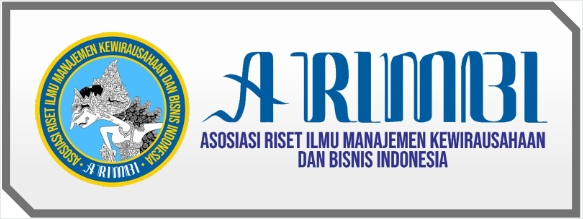Impact of Credit and Liquidity Risk on Profitability: The Conventional Rural Banks in Riau Islands Province
DOI:
https://doi.org/10.30588/jmp.v13i2.1667Keywords:
Conventional rural banks, credit risk, liquidity risk, profitabilityAbstract
The Covid-19 pandemic drastically changed the world economy, resulting in Indonesia experiencing an economic decline and deflation. The banking industry played a significant role in building the economy, so the financial services authority issued a circular letter regarding the provisions for implementing risk management for conventional rural banks and the new rules for implementing credit restructuring. This study analyzed the impact of credit and liquidity risk of conventional rural banks in the Riau Islands on profitability. Data were extracted from the financial services authority publication report of 42 conventional rural banks in Riau Islands during 2017-2021. The results of panel data analysis with the fixed effect model (FEM) showed that all risks were significantly associated with profitability (ROA), the authors found that the capital adequacy ratio had a positive significance, and the non-performing loan, liquid asset to total asset, loan to deposit ratio, and cash to deposit ratio harmed ROA. The results showed that bank risk management was needed to maintain the profitability of rural banks in Riau Islands Province.
References
Abbas, F., Iqbal, S., & Aziz, B. (2019). The impact of bank capital, bank liquidity and credit risk on profitability in postcrisis period: A comparative study of US and Asia. Cogent Economics and Finance, 7(1), 1–18. https://doi.org/10.1080/23322039.2019.1605683
Abdelaziz, H., Rim, B., & Helmi, H. (2020). The interactional relationships between credit risk, liquidity risk and bank profitability in MENA region. Global Business Review, 23(1), 1–23. https://doi.org/10.1177/0972150919879304
AL-Husainy, N. H. M., & Jadah, H. M. (2021). The effect of liquidity risk and credit risk on the bank performance: empirical evidence from Iraq. IRASD Journal of Economics, 3(1), 58–67. https://doi.org/https://doi.org/10.52131/joe.2021.0301.0025
Alalade, Y. S., Ogbebor, P. I., & Akwe, M. (2020). Liquidity risk and profitability of listed deposit money banks in Nigeria. Research Journal of Finance and Accounting, 11(8), 126–139. https://doi.org/10.7176/rjfa/11-8-13
Aliu, M., & Collaku, B. (2021). Impact of non-performing loans on bank’s profitability: empirical evidence from commercial banks in Kosovo. Journal of Accounting, Finance and Auditing Studies (JAFAS), 7(3), 226–242. https://doi.org/10.32602/jafas.2021.027
Anggari, N. L. S., & Dana, I. M. (2020). The effect of capital adequacy ratio, third party funds, loan to deposit ratio, bank size on profitability in banking companies on IDX. American Journal of Humanities and Social Sciences Research, 4(12), 334–338. www.ajhssr.com
Ari, A., Chen, S., & Ratnovski, L. (2020). The dynamics of non-performing loans during banking crises: a new database. European Working Paper 2020. https://doi.org/https://doi.org/10.2866/174853
Bandara, H. M. K. S., Jameel, A. L. M., & Haleem, A. (2021). Credit risk and profitability of banking sector in Sri Lanka. Journal of Economics, Finance and Accounting Studies (JEFAS), 3(1), 65–71. https://doi.org/10.32996/jefas.2021.3.1.6
Candy, & Suprapto, Y. (2018). Peranan manajemen risiko kredit terhadap kinerja perusahaan BPR di Riau. Seminar Nasional
Cendekiawan, 4(2), 885–893. https://trijurnal.lemlit.trisakti.ac.id/semnas/article/view/3357
Chong, V. S. W., Lam, J. M. S., & Tan, S. H. (2019). The relationship of risk management and bank profitability performance between domestic and foreign Islamic banks in Malaysia. Humanities and Social Sciences Reviews, 7(6), 411–415. https://doi.org/10.18510/hssr.2019.7666
Chowdhury, M. M., & Zaman, S. (2018). Effect of liquidity risk on performance of Islamic banks in Bangladesh. IOSR Journal of Economics and Finance, 9(4), 1–09. https://doi.org/10.9790/5933-0904010109
Daniel, W. (2021). Ketua OJK ungkap kondisi sektor keuangan terkini saat pandemi. CNBC Indonesia. Retrieved August 8, from,
Doana, T. T. T., & Buia, T. N. (2021). How does liquidity influence bank profitability? a panel data approach. Accounting, 7(1), 59–64. https://doi.org/10.5267/j.ac.2020.10.014
Ekinci, R., & Poyraz, G. (2019). The effect of credit risk on financial performance of deposit banks in Turkey. Procedia Computer Science, 158, 979–987. https://doi.org/10.1016/j.procs.2019.09.139
Fatwa, A. M. (2019). Kredit macet BPR Kepri mengkhawatirkan. ValidNews.Id. Retrieved May 24, from,
https://www.validnews.id/ekonomi/Kredit-Macet-BPR-Kepri-Mengkhawatirkan-yBU
Gadzo, S. G., Kportorgbi, H. K., & Gatsi, J. G. (2019). Credit risk and operational risk on financial performance of universal banks in Ghana: A partial least squared structural equation model (PLS SEM) approach. Cogent Economics and Finance, 7(1). https://doi.org/10.1080/23322039.2019.1589406
Gallati, R. R. (2022). Risk management and capital adequacy. https://doi.org/10.1036/0071425586
Hamza, S. M. (2017). Impact of credit risk management on banks performance: a case study in Pakistan banks. European Journal of Business and Management, 9(1), 57–64.
Haralayya, B., & Aithal, P. . (2021). Performance affecting factors of Indian banking sector: An empirical analysis. George Washington International Law Review, 07(01), 607–621.
Hidayat, F. (2021). Peran Perbankan dalam Percepatan Pemulihan Ekonomi Nasional. Retrieved July 12, from, WartaEkonomi.Co.Id.
Hunjra, A. I., Mehmood, A., Nguyen, H. P., & Tayachi, T. (2020). Do firm-specific risks affect bank performance? International Journal of Emerging Markets, 17(3), 664–682. https://doi.org/10.1108/IJOEM-04-2020-0329
Huong, T. T. X., Nga, T. T. T., & Oanh, T. T. K. (2021). Liquidity risk and bank performance in Southeast Asian countries: a dynamic panel approach. Quantitative Finance and Economics, 5(1), 111–133. https://doi.org/10.3934/qfe.2021006
Kajola, S. O., Sanyaolu, W. A., Alao, A., & Ojunrongbe, O. J. (2019). Liquidity and profitability dynamics: evidence from the Nigerian banking sector. Accounting and Taxation Review, 3(2), 1–12.
Karim, S., Akhtar, M. U., Tashfeen, R., Raza Rabbani, M., Rahman, A. A. A., & AlAbbas, A. (2022). Sustainable banking regulations pre and during coronavirus outbreak: the moderating role of financial stability. Economic Research-Ekonomsageka Istrazivanja, 35(1), 3360–3377. https://doi.org/10.1080/1331677X.2021.1993951
Khati, M. P. (2020). Impact of liquidity on profitability of Nepalese commercial banks. IOSR Journal of Economics and Finance, 11(5), 26–33. https://doi.org/10.9790/5933-1105012633
Majeed, M. T., & Zainab, A. (2021). A comparative analysis of financial performance of Islamic banks vis-à-vis conventional banks: evidence from Pakistan. ISRA International Journal of Islamic Finance, 13(3), 331–346. https://doi.org/10.1108/IJIF-08-2018-0093
Mashamba, T. (2018). The effects of Basel III liquidity regulations on banks’ profitability. Journal of Governance and Regulation, 7(2), 34–48. https://doi.org/10.22495/jgr_v7_i2_p4
Masood, O., & Javaria, K. (2017). Liquidity risk management and financial performance of Islamic banks: Empirical evidence from global Islamic banks. Journal of Islamic Financial Studies, 3(2), 63–70.
Naim, Y. J. (2019). Banyak yang nganggur, kredit macet BPR Kepri tembus 7,95 persen. Retrieved September 17, from, https://www.antaranews.com/berita/1066968/banyak-yang-nganggur-kredit-macet-bpr-kepri-tembus-795-persen
Nugraha, N. M., Nariswari, T. N., Yahya, A., Salsabila, F., & Octaviantika, I. Y. (2021). Impact of non-performing loans, loan to deposit ratio and education diverstiy on firm performance of Indonesia banking sectors. Review of International Geographical Education, 11(3), 85–96. https://doi.org/10.33403/rigeo.800472
Nwude, C. E., & Okeke, C. (2018). Impact of credit risk management on the performance of selected Nigerian banks. International Journal of Economics and Financial Issues, 8(2), 287–297. http:www.econjournals.com
OJK. (2022). Bank Perkreditan Rakyat. Otoritas Jasa Keuangan. https://www.ojk.go.id/id/kanal/perbankan/Pages/Bank-Perkreditan-Rakyat.aspx
Otwoko, B. E., & Maina, K. (2021). Effect of liquidity risk on the financial performance of deposit taking savings and credit cooperative organisations (SACCOs) in Kenya. International Journal of Research in Business and Social Science (, 10(2), 203–211. https://doi.org/10.20525/ijrbs.v10i2.1056
Pai, R. J., & Chotia, V. (2019). Factors determining profitability of banks in UAE. International Journal of Financial Services Management, 9(4), 386–407. https://doi.org/10.1504/ijfsm.2019.10024220
Prasetia, A. (2023). OJK bakal bubarkan 600 Bank Perkreditan Rakyat dalam 5 tahun. CNN Indonesia. Retrieved February 6, from,
Saleh, I., & Abu Afifa, M. (2020). The effect of credit risk, liquidity risk and bank capital on bank profitability: Evidence from an emerging market. Cogent Economics and Finance, 8(1). https://doi.org/10.1080/23322039.2020.1814509
Sathyamoorthi, C. R., Mapharing, M., & Dzimiri, M. (2020). Liquidity management and financial performance: evidence from commercial banks in Botswana. International Journal of Financial Research, 11(5), 399–413. https://doi.org/10.5430/ijfr.v11n5p399
Wareza, M. (2021). OJK bikin aturan baru untuk BPR, biar bisa bantu UMKM. CNBC Indonesia. from, https://www.cnbcindonesia.com/market/20210224170429-17-225925/ojk-bikin-aturan-baru-untuk-bpr-biar-bisa-bantu-umkm
Zakhariah, C., & Hesniati. (2022). Comparative analysis of islamic commercial banks and sharia business units in Indonesia. Jurnal Ilmiah Ekonomi Islam, 8(02), 1393–1403. https://doi.org/http://dx.doi.org/10.29040/jiei.v8i2.4847 1.
Downloads
Published
How to Cite
Issue
Section
License
Copyright (c) 2024 Ellen tan

This work is licensed under a Creative Commons Attribution 4.0 International License.
Authors who publish with Jurnal Maksipreneur agree to the following terms:
Authors retain copyright and grant the Jurnal Maksipreneur right of first publication with the work simultaneously licensed under a Creative Commons Attribution 4.0 International License that allows others to share (copy and redistribute the material in any medium or format) and adapt (remix, transform, and build upon the material) the work for any purpose, even commercially with an acknowledgment of the work's authorship and initial publication in Jurnal Maksipreneur.
Authors are able to enter into separate, additional contractual arrangements for the non-exclusive distribution of the journal's published version of the work (e.g., post it to an institutional repository or publish it in a book), with an acknowledgment of its initial publication in Jurnal Maksipreneur. Authors are permitted and encouraged to post their work online (e.g., in institutional repositories or on their website) prior to and during the submission process, as it can lead to productive exchanges, as well as earlier and greater citation of published work (See The Effect of Open Access).























